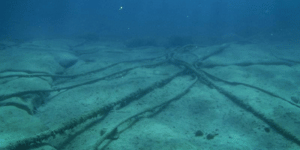2 min read
Ensuring Safe and Efficient Operations for the Life of the Farm
Jee Ltd
Dec 20, 2023 10:34:11 AM
.png)
Subsea cables play a critical role in the exploration and production of oil and gas, carrying power, communications, and control signals between subsea equipment and onshore facilities.
They are an essential component of offshore energy production and transfer, connecting wind turbines, oil & gas platforms, and offshore power plants to shore. However, subsea cables are exposed to various environmental hazards that can impact their integrity, including physical damage from fishing activities, environmental loading due to ocean currents and waves, and temperature changes. 80% of all insurance claims related to offshore wind are caused by cable failure.
To ensure that these cables continue to operate at their optimal level, integrity management is crucial. This involves a comprehensive program that focuses on identifying, assessing, and mitigating potential risks to the subsea cables. The goal is to maintain the integrity of the subsea cable throughout its life cycle and to avoid unplanned downtime or costly repairs.
Integrity management of subsea cables includes activities such as regular monitoring and inspection, maintenance, repair, and replacement. An effective integrity management program should include a risk management strategy that assesses the potential impact of different threats to the subsea cable, a maintenance and inspection program that prioritises critical components and addresses potential issues, and a contingency plan for rapid response in the event of a failure.
With the increasing reliance on subsea cables for offshore energy transfer, the importance of integrity management is becoming increasingly apparent. A well-designed and executed integrity management program is crucial to the long-term success of subsea cable projects and ensures the safe, reliable, and cost-effective transfer of energy.
Subsea cable integrity management involves a range of activities aimed at ensuring that subsea cables are fit for purpose and operating within acceptable parameters. This includes:
- Design and Installation: Ensuring that subsea cables are designed and installed to meet the required operational requirements and industry standards.
- Monitoring and Inspection: Regular monitoring and inspection of subsea cables to identify any issues or degradation.
- Maintenance and Repair: Implementing a maintenance and repair program to address any issues identified during monitoring and inspection, ensuring that subsea cables are kept in good condition.
- Asset Management: Effective management of subsea cable assets, including documentation to manage inventory, and tracking of maintenance and repair activities.
- Risk Management: Implementing a risk management program to minimise the risk of subsea cable failure, considering contingencies to minimise the impact of cable failure, where appropriate. This can involve conducting regular risk assessments to identify potential risks to the subsea cable system, such as natural disasters, fishing activities, and vessel anchoring.
- Emergency Response: Having a well-defined emergency response plan in place to quickly respond to incidents and minimise downtime.
- Upgrade and Renewal: Planning for and implementing upgrades and replacements of subsea cables and cable components as necessary to ensure their long-term reliability.
By managing the integrity of subsea cables, subsea engineers can ensure that these systems are safe, efficient, and reliable, providing the critical infrastructure required for the exploration and production of oil and gas and renewables.


%20(1).png)


.png)